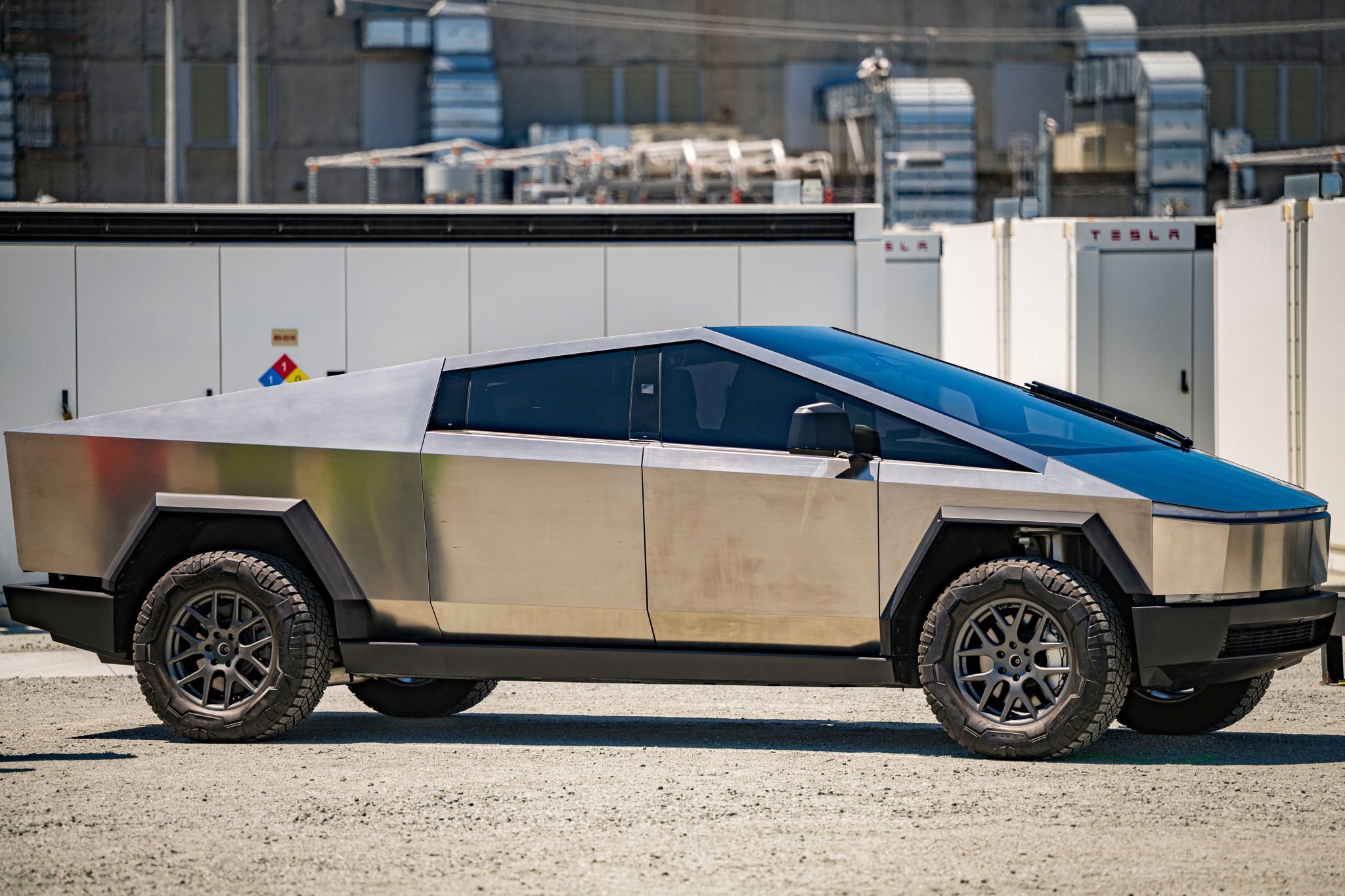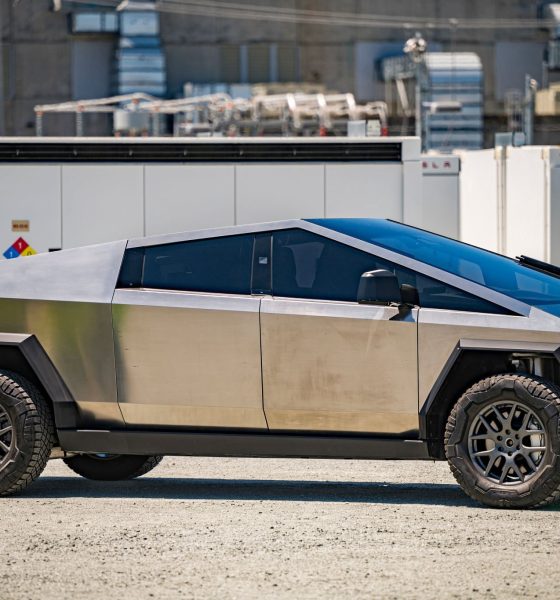

News
Tesla FSD is the answer to concerns about EVs’ possible “added” road risks
A recent article from Slate has brought up a rather interesting concern about electric vehicles and their wide adoption. Since electric cars tend to be a lot heavier than their combustion-powered counterparts, there is a nonzero chance that they could actually be more dangerous to pedestrians in the event of a crash. Tesla FSD could be the answer to these concerns.
There is an uncomfortable truth in the United States, and that is the fact that road fatalities are climbing. The National Highway Traffic Safety Administration (NHTSA), for one, noted that American road deaths soared during Q1 2022, rising 7% to 9,560 fatalities, the highest quarterly toll since 2002. The numbers are sobering, as they suggest that compared to pedestrians in countries like France and Canada, Americans are more than twice as likely to die in a crash.
There are quite a few factors behind these disturbing statistics, but one of them is believed to be the prevalence of overly large and heavy vehicles like full-size trucks and SUVs. While trucks are generally designed for work, full-sized pickups are now widely used by casual drivers to the point where some pickups barely see a day of legitimate work. SUVs are also all the rage. But while these vehicles could be quite safe for those inside them, they are a nightmare for the pedestrians that they might hit in the event of an accident.
As noted by Slate, one study actually found that the shift to SUVs over the past couple of decades ended up leading to over 1,000 more pedestrian deaths. Now, it should be noted that these large vehicles are already overly heavy with an internal combustion engine. When they are powered by a giant battery pack and equipped with electric motors, they become even heavier and a whole lot faster. The over-9,000-pound Hummer EV is the poster child of this, as the behemoth is capable of hitting highway speeds in about 3.3 seconds.
But inasmuch as these concerns are valid, heavy electric vehicles are only really just as dangerous as their drivers and safety features. Tesla has been making overly-heavy and ridiculously-fast sedans and crossovers for many years, yet its vehicles constantly rank among the safest on the road. This is due in no small part to the company’s active and passive safety features, which are standard on every Tesla that gets built at each of the company’s vehicle factories, both in the United States and abroad.
And coupled with Tesla’s FSD software, the risks for heavy electric vehicles are likely even less. Behind all the drama and smear campaigns targeted toward the advanced driver-assist system, after all, FSD is an incredibly cautious system that takes pedestrian safety as a top priority. Tests of Tesla FSD Beta releases have shown this time and time again — the system always keeps people around the car as safe as possible.
The use of systems like FSD Beta would likely be more widespread as the adoption of electric vehicles becomes more prevalent. Teslas would likely continue to be among the safest vehicles on the road, despite the company likely producing one of the heaviest vehicles on the market in the Tesla Semi. Fortunately, Tesla does seem to be open to the idea of having its software, like Autopilot, licensed to other automakers. This means that Tesla’s stellar safety systems could be rolled out to more vehicles, including those beyond the reach of the company’s products.
This, however, would require other automakers to admit that Tesla’s Autopilot and FSD are industry-leading solutions for pedestrian safety. Such an admission takes a lot of humility, and thus, is easier said than done. But the longer other automakers wait to roll out systems that are comparable to FSD or at least Autopilot, the longer pedestrians are exposed to an increasing number of electric vehicles that could indeed be too heavy and too fast in an accident.
Don’t hesitate to contact us with news tips. Just send a message to simon@teslarati.com to give us a heads up.

Elon Musk
Elon Musk and Tesla AI Director share insights after empty driver seat Robotaxi rides
The executives’ unoccupied tests hint at the rapid progress of Tesla’s unsupervised Robotaxi efforts.

Tesla CEO Elon Musk and AI Director Ashok Elluswamy celebrated Christmas Eve by sharing personal experiences with Robotaxi vehicles that had no safety monitor or occupant in the driver’s seat. Musk described the system’s “perfect driving” around Austin, while Elluswamy posted video from the back seat, calling it “an amazing experience.”
The executives’ unoccupied tests hint at the rapid progress of Tesla’s unsupervised Robotaxi efforts.
Elon and Ashok’s firsthand Robotaxi insights
Prior to Musk and the Tesla AI Director’s posts, sightings of unmanned Teslas navigating public roads were widely shared on social media. One such vehicle was spotted in Austin, Texas, which Elon Musk acknowleged by stating that “Testing is underway with no occupants in the car.”
Based on his Christmas Eve post, Musk seemed to have tested an unmanned Tesla himself. “A Tesla with no safety monitor in the car and me sitting in the passenger seat took me all around Austin on Sunday with perfect driving,” Musk wrote in his post.
Elluswamy responded with a 2-minute video showing himself in the rear of an unmanned Tesla. The video featured the vehicle’s empty front seats, as well as its smooth handling through real-world traffic. He captioned his video with the words, “It’s an amazing experience!”
Towards Unsupervised operations
During an xAI Hackathon earlier this month, Elon Musk mentioned that Tesla owed be removing Safety Monitors from its Robotaxis in Austin in just three weeks. “Unsupervised is pretty much solved at this point. So there will be Tesla Robotaxis operating in Austin with no one in them. Not even anyone in the passenger seat in about three weeks,” he said. Musk echoed similar estimates at the 2025 Annual Shareholder Meeting and the Q3 2025 earnings call.
Considering the insights that were posted Musk and Elluswamy, it does appear that Tesla is working hard towards operating its Robotaxis with no safety monitors. This is quite impressive considering that the service was launched just earlier this year.
Elon Musk
Starlink passes 9 million active customers just weeks after hitting 8 million
The milestone highlights the accelerating growth of Starlink, which has now been adding over 20,000 new users per day.

SpaceX’s Starlink satellite internet service has continued its rapid global expansion, surpassing 9 million active customers just weeks after crossing the 8 million mark.
The milestone highlights the accelerating growth of Starlink, which has now been adding over 20,000 new users per day.
9 million customers
In a post on X, SpaceX stated that Starlink now serves over 9 million active users across 155 countries, territories, and markets. The company reached 8 million customers in early November, meaning it added roughly 1 million subscribers in under seven weeks, or about 21,275 new users on average per day.
“Starlink is connecting more than 9M active customers with high-speed internet across 155 countries, territories, and many other markets,” Starlink wrote in a post on its official X account. SpaceX President Gwynne Shotwell also celebrated the milestone on X. “A huge thank you to all of our customers and congrats to the Starlink team for such an incredible product,” she wrote.
That growth rate reflects both rising demand for broadband in underserved regions and Starlink’s expanding satellite constellation, which now includes more than 9,000 low-Earth-orbit satellites designed to deliver high-speed, low-latency internet worldwide.
Starlink’s momentum
Starlink’s momentum has been building up. SpaceX reported 4.6 million Starlink customers in December 2024, followed by 7 million by August 2025, and 8 million customers in November. Independent data also suggests Starlink usage is rising sharply, with Cloudflare reporting that global web traffic from Starlink users more than doubled in 2025, as noted in an Insider report.
Starlink’s momentum is increasingly tied to SpaceX’s broader financial outlook. Elon Musk has said the satellite network is “by far” the company’s largest revenue driver, and reports suggest SpaceX may be positioning itself for an initial public offering as soon as next year, with valuations estimated as high as $1.5 trillion. Musk has also suggested in the past that Starlink could have its own IPO in the future.
News
NVIDIA Director of Robotics: Tesla FSD v14 is the first AI to pass the “Physical Turing Test”
After testing FSD v14, Fan stated that his experience with FSD felt magical at first, but it soon started to feel like a routine.

NVIDIA Director of Robotics Jim Fan has praised Tesla’s Full Self-Driving (Supervised) v14 as the first AI to pass what he described as a “Physical Turing Test.”
After testing FSD v14, Fan stated that his experience with FSD felt magical at first, but it soon started to feel like a routine. And just like smartphones today, removing it now would “actively hurt.”
Jim Fan’s hands-on FSD v14 impressions
Fan, a leading researcher in embodied AI who is currently solving Physical AI at NVIDIA and spearheading the company’s Project GR00T initiative, noted that he actually was late to the Tesla game. He was, however, one of the first to try out FSD v14.
“I was very late to own a Tesla but among the earliest to try out FSD v14. It’s perhaps the first time I experience an AI that passes the Physical Turing Test: after a long day at work, you press a button, lay back, and couldn’t tell if a neural net or a human drove you home,” Fan wrote in a post on X.
Fan added: “Despite knowing exactly how robot learning works, I still find it magical watching the steering wheel turn by itself. First it feels surreal, next it becomes routine. Then, like the smartphone, taking it away actively hurts. This is how humanity gets rewired and glued to god-like technologies.”
The Physical Turing Test
The original Turing Test was conceived by Alan Turing in 1950, and it was aimed at determining if a machine could exhibit behavior that is equivalent to or indistinguishable from a human. By focusing on text-based conversations, the original Turing Test set a high bar for natural language processing and machine learning.
This test has been passed by today’s large language models. However, the capability to converse in a humanlike manner is a completely different challenge from performing real-world problem-solving or physical interactions. Thus, Fan introduced the Physical Turing Test, which challenges AI systems to demonstrate intelligence through physical actions.
Based on Fan’s comments, Tesla has demonstrated these intelligent physical actions with FSD v14. Elon Musk agreed with the NVIDIA executive, stating in a post on X that with FSD v14, “you can sense the sentience maturing.” Musk also praised Tesla AI, calling it the best “real-world AI” today.








